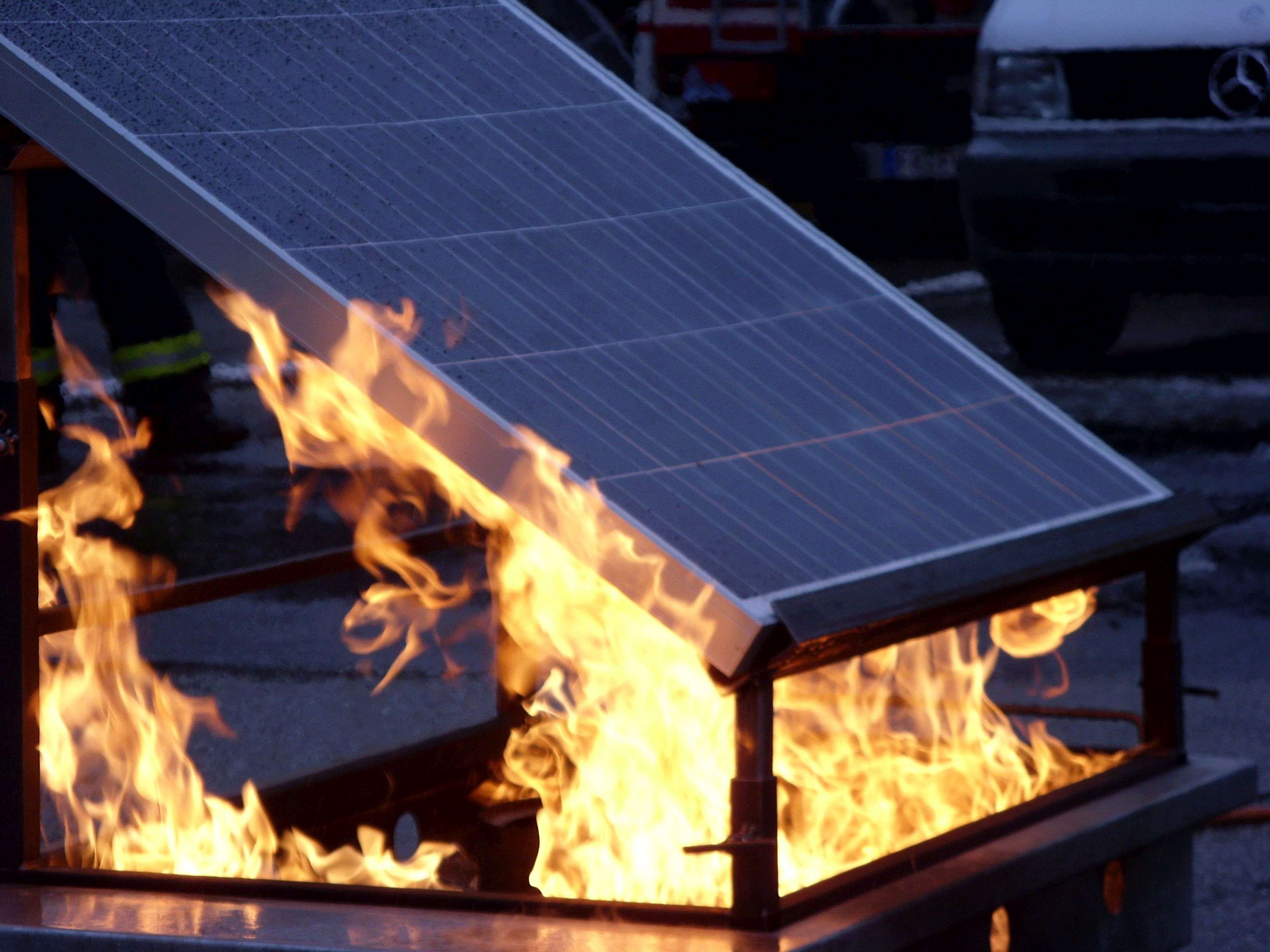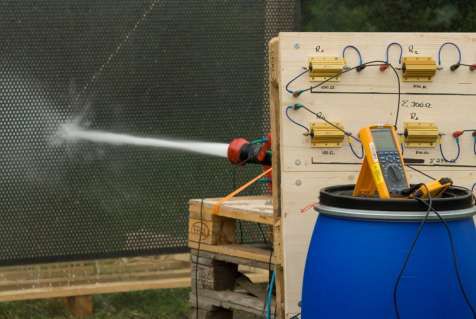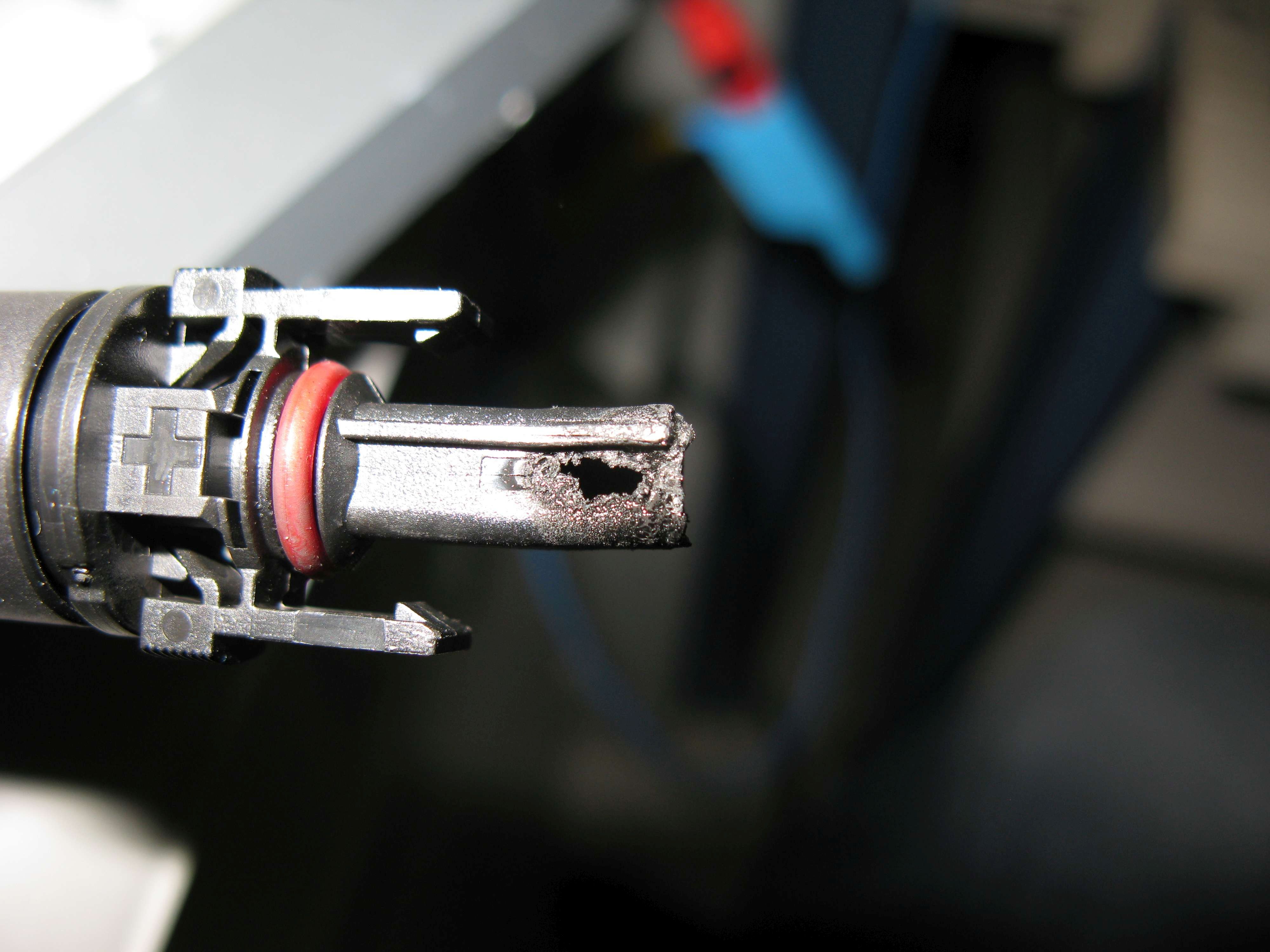| Duration: | February 2011 - October 2014 |
| Contracting Authority/ Sponsors: | Federal Ministry for the Environment, Nature Conservation, Building and Nuclear Safety (BMU) |
| Project Partners: | Allied Partners
Project Partners
|
| Project Focus: |
PV Fire Protection - Evaluation of the Fire Risk in Photovoltaic Plants and Development of Safety Concepts for Risk Minimization



Photovoltaic plants, like every electric installation, hold a certain danger potential regarding the occurrence of fire and personal danger from electric shock. Several published cases of fire shifted this topic to the focus of the public when the project began. Therefore, the safety of PV plants regarding the risks of flashing arc development and dangers in case of fire were investigated in great detail. Special emphasis was placed on the safety of the firefighting forces in case of a fire.
As a result, an extensive guideline for the assessment and minimization of fire risks in PV plants was published.
For risk analysis and the derivation of recommended actions for emergency personnel, different trials were carried out to assess the electrical dangers of PV plants and the emissions in case of fire of PV modules. Members of fire departments and of the Federal Agency for Technical Relief were actively involved in the tests. This involvement was supposed to clarify uncertainties about how to properly approach PV roof systems, uncertainties, which lead to strongly exaggerated and even false reports in the media, creating safety concerns among the public and among fire fighters.
The revision and systematic root cause analysis of events of fire and overheating damages and a basic, scientifically founded investigation of PV modules during this research project helped to assess the real dangers of electrically induced fires in PV systems. The project was supported by feedback from PV experts, insurance companies, fire departments and operators of PV plants as part of a large-scale investigation regarding fire and overheating damages at PV plants. A generally recognized process for risk assessment (FMEA) provided a significant part of the results. For this assessment, an expert committee examined all plant components, including installation, operation and maintenance.
Furthermore, the possibilities of PV arc detectors (AFCI) were examined in this project and a test procedure and a test bench were developed for comparing the performance of different AFCI.
On the basis of the determined risk potentials and field investigations, specific action recommendations for minimizing the risks of fire were provided for the component manufacturers as well as for planners and builders of photovoltaic plants. In addition, significant results were presented to various PV standardization committees. Overall, the project managed to achieve a clear objectification of the somewhat unreliable reporting about damages caused by fires in PV plants.